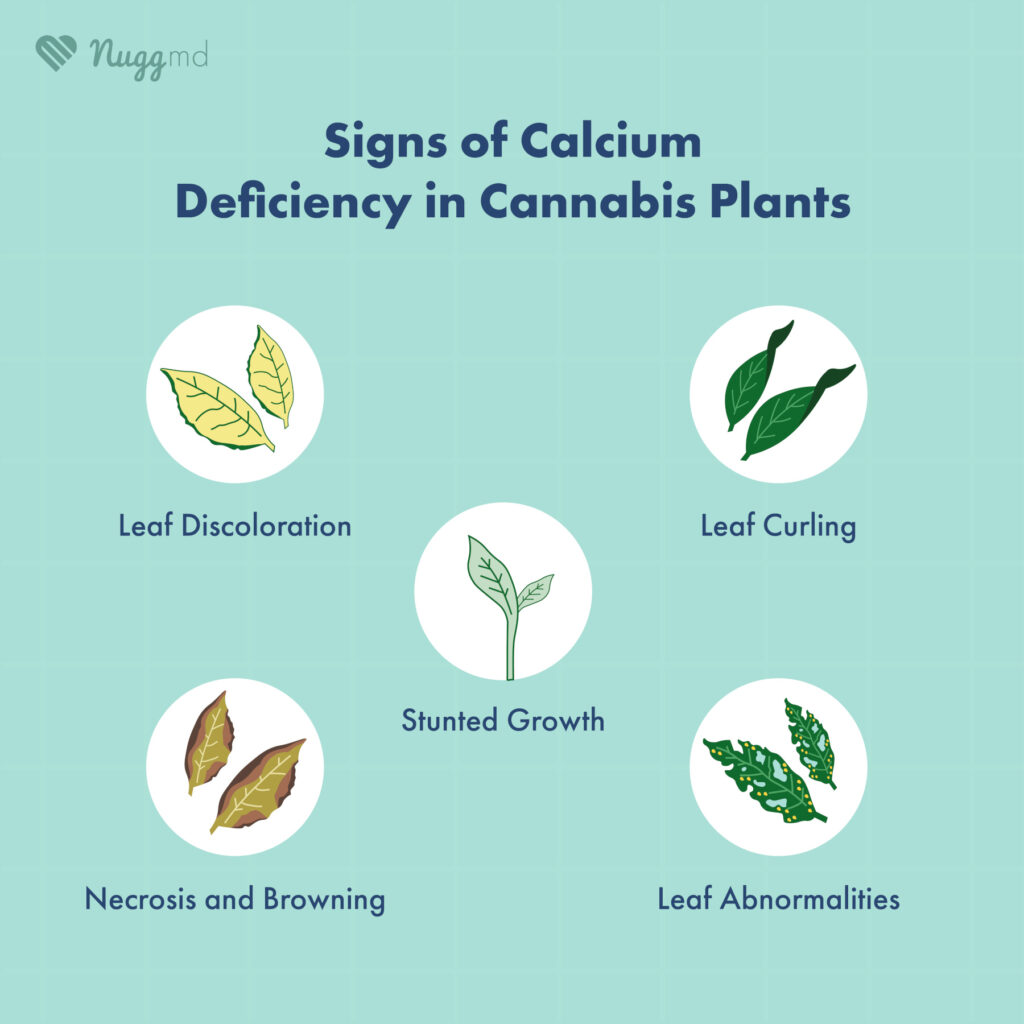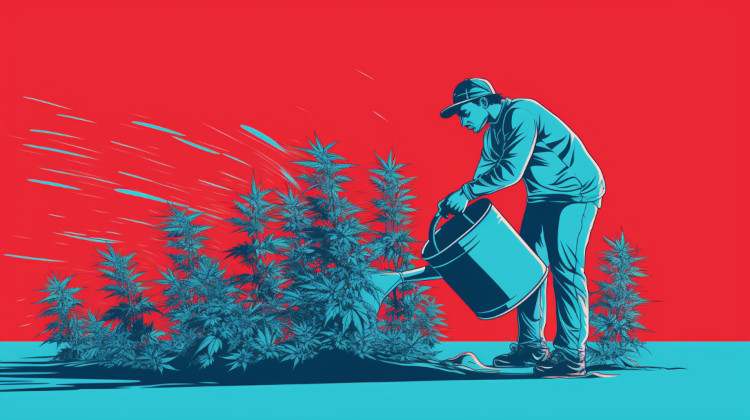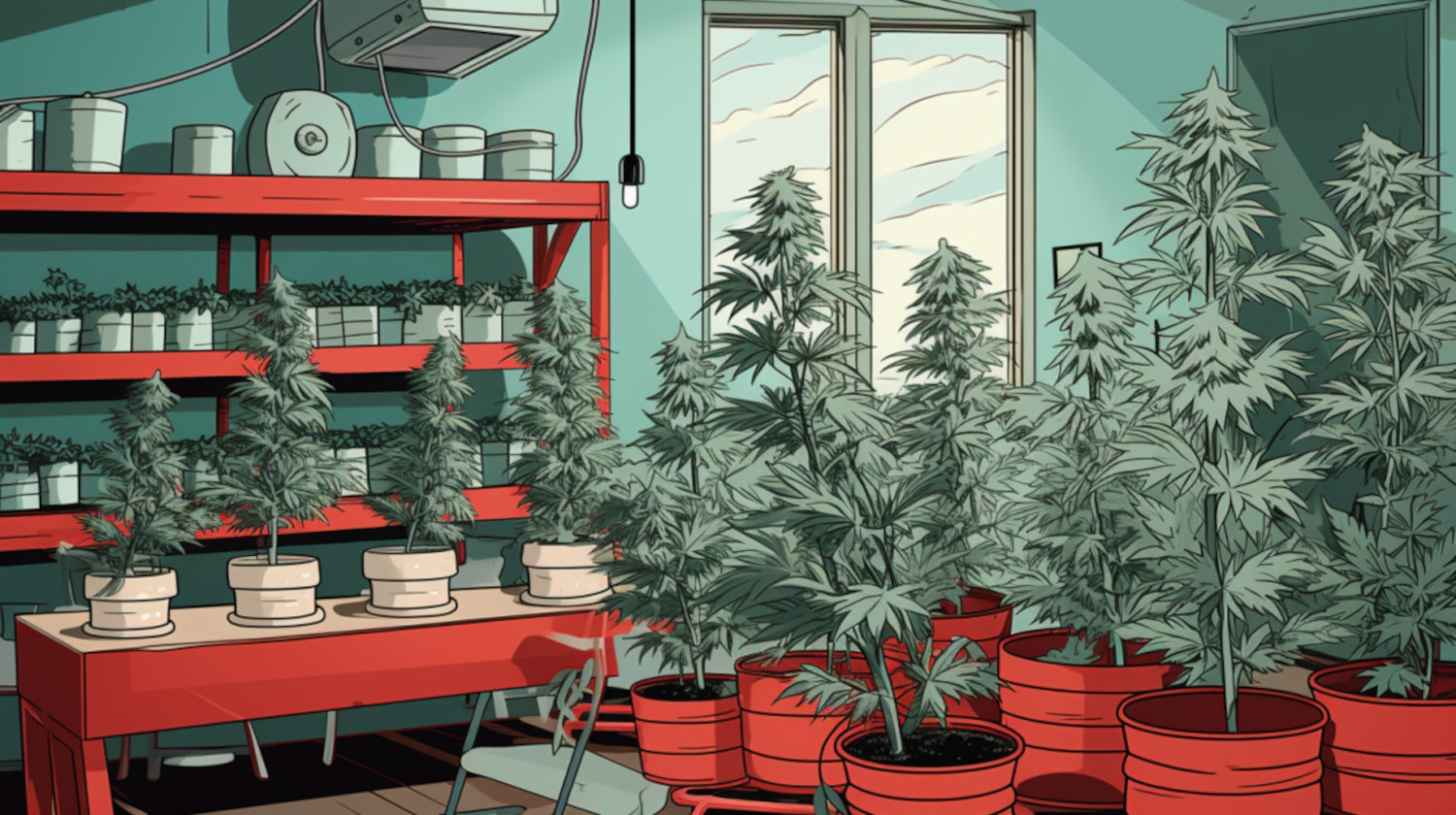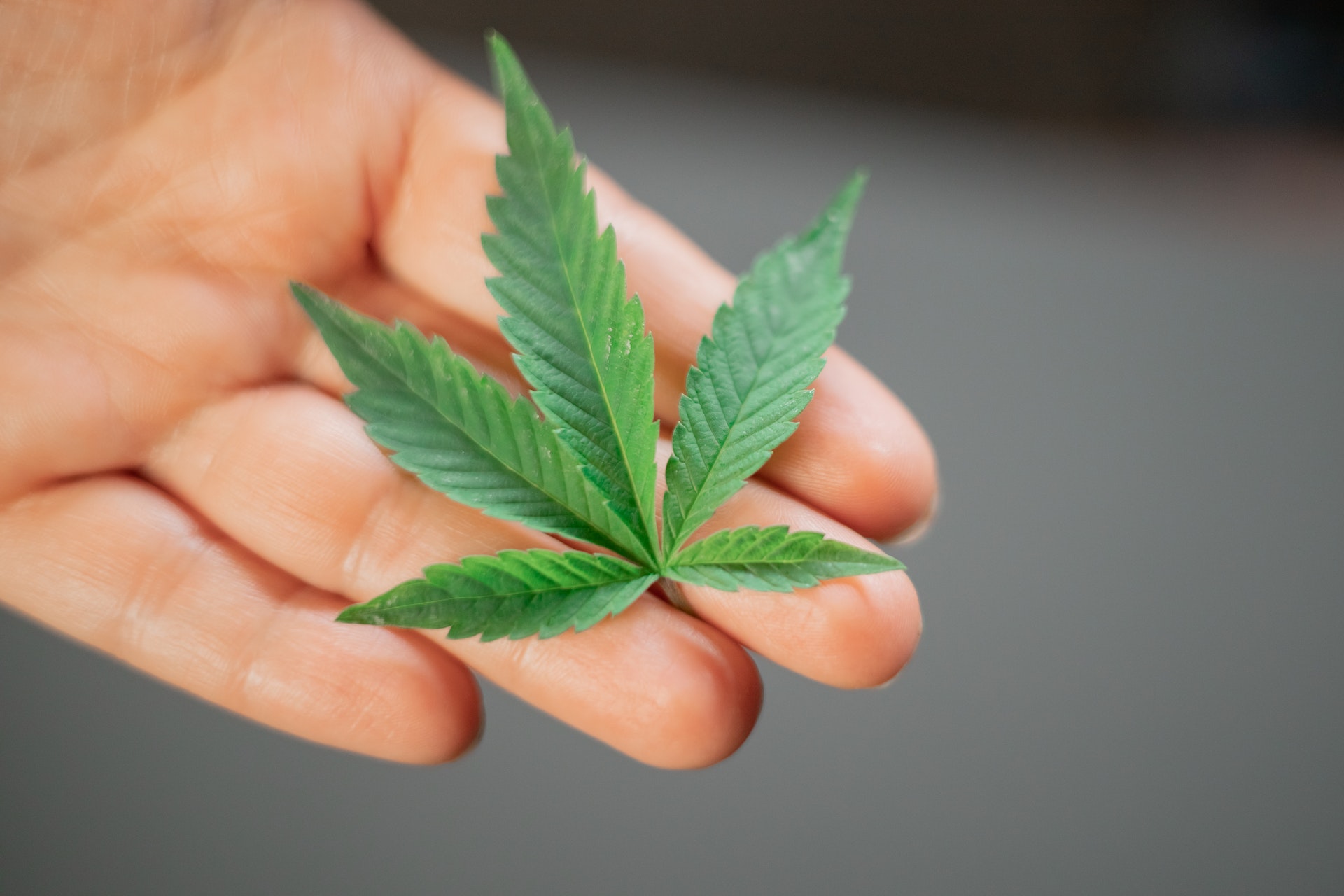In This Article
- What is Calcium Deficiency in Weed?
- What about Cal Mag Deficiency?
- Why Does Calcium Deficiency Happen?
- Common Causes of Calcium Deficiency in Cannabis Plants
- Signs of Calcium Deficiency in Cannabis Plants
- How to Prevent Calcium Deficiency in Cannabis
- How to Save Your Plants From Calcium Deficiency
- How Long Does It Take to Remedy?
- Different Growth Stages and Recovery
- References
Cannabis cultivation has gained remarkable popularity in recent years, driven by medical patients seeking therapeutic relief and dedicated home growers striving for the highest-quality yields.
For many patients, cannabis isn't merely a recreational choice; it's a lifeline, providing much-needed relief for many individuals with various conditions. However, to harness the full potential of this remarkable plant, cultivators must understand the specific conditions and nutrients that cannabis plants require to thrive. Among these essential nutrients, calcium plays a pivotal role.
Calcium deficiency is one of the challenges that cannabis cultivators may encounter during their journey, and its effects can be detrimental to both plant health and crop yield.
What is Calcium Deficiency in Weed?
Calcium deficiency in cannabis plants is a condition, as the name suggests, where the plants fail to receive an adequate supply of calcium, a vital nutrient essential for their growth and overall well-being. Calcium, abbreviated as "Ca" in the periodic table, is a fundamental building block for cannabis plants, just as it is for humans.
Calcium is crucial for cannabis plants for several reasons:
- Cell Wall and Membrane Structure: Calcium is required for various structural roles in the cell wall and cell membranes of cannabis plants. It helps maintain plant cells' integrity and strength so that they can withstand environmental stressors.1
- Nutrient Uptake: Calcium regulates ion exchange within the plant, aiding in the uptake of other essential nutrients, such as potassium and magnesium. In doing so, cannabis plants can access the full spectrum of nutrients they require for healthy growth.
- Cell Division and Growth: Calcium plays a significant role in the processes of cell division, which is vital for the growth of cannabis plants.
- Seed Germination: Calcium is essential for seed germination, allowing the cannabis seeds to develop into healthy seedlings and mature plants.
As such, calcium deficiency poses a significant problem (like all cannabis plant deficiencies) for cannabis plants for several reasons:
- Reduced Structural Integrity: Insufficient calcium weakens the cell walls and membranes of cannabis plants, making them more susceptible to physical damage and environmental stressors.
- Nutrient Imbalances: Calcium deficiency can disrupt the balance of other essential nutrients, impacting the overall health and growth of cannabis plants.
- Lowered Yields: Calcium deficiency can lead to stunted growth, reduced flower production, and lower overall crop yields, which can be particularly concerning for both medical patients and serious home growers relying on cannabis.
What about Cal Mag Deficiency?
Cal-mag deficiency, short for calcium and magnesium deficiency, is a term for a condition in which cannabis plants are deficient in both calcium and magnesium. While calcium and magnesium are distinct nutrients, they are closely related in their roles within the plant.
Both calcium and cal-mag deficiency can manifest with similar symptoms, such as leaf discoloration and distorted growth. In both cases, the lack of these essential nutrients can hinder overall plant health and productivity.
However, cal-mag deficiency specifically involves a shortage of magnesium in addition to calcium, while calcium deficiency pertains solely to inadequate calcium levels. The symptoms of cal-mag deficiency may include interveinal chlorosis (yellowing between the veins) and leaf curling, which can be somewhat different from the symptoms of calcium deficiency.2
Why Does Calcium Deficiency Happen?

Calcium deficiency in cannabis plants can be a complex issue influenced by many factors. It is most often linked to the plant's inability to translocate an adequate amount of calcium to the affected parts rather than a lack of calcium in the soil.
Understanding the causes of cannabis calcium deficiency is crucial for effectively addressing and preventing this problem in your crop.
Common Causes of Calcium Deficiency in Cannabis Plants
- Soil Conditions: The availability of calcium in the soil can be affected by several factors, including soil pH levels, salt content, oxygen levels, and temperature.3 Cannabis plants thrive in slightly acidic to neutral soils (pH around 6 to 7). Calcium uptake can be hindered if the soil pH is too low or too high.
- Soil Moisture and Aeration: Soil moisture content and oxygen levels, including calcium, are critical for nutrient uptake. Waterlogged or compacted soils can limit oxygen availability to the roots, which, in turn, impairs calcium absorption.4
- Nutrient Imbalances: Imbalances in the levels of other nutrients, such as potassium and magnesium, can indirectly contribute to calcium deficiency. High levels of potassium, for instance, can interfere with calcium uptake by cannabis plants.5
- Root Health: An inadequate rate of root production or root damage can reduce a plant's ability to access calcium from the soil.
- Environmental Factors: Environmental factors such as air temperature, carbon dioxide (CO2) concentration, photoperiod, radiation levels, relative humidity (RH), and daily fluctuations in water potential can also influence calcium deficiency in cannabis plants. These variables can impact the overall health and nutrient uptake of cannabis plants.
Remember that calcium deficiency in cannabis plants often occurs due to a combination of these factors rather than a single, isolated cause. While calcium and magnesium deficiencies can share some common symptoms, Cal-mag deficiency is primarily characterized by a lack of magnesium.
Signs of Calcium Deficiency in Cannabis Plants

You'll need to be vigilant about recognizing calcium deficiency in cannabis plants for prompt intervention and the continued health and productivity of your crop. Luckily, calcium deficiency can show itself through a series of visual symptoms that provide cultivators with important cues about their plant's well-being. 6
Cannabis plants suffering from calcium deficiency typically exhibit the following signs:
- Leaf Discoloration: One of the earliest signs of calcium deficiency is the appearance of yellow or pale green leaves. This discoloration usually begins at the tips and edges of the leaves and may gradually spread inwards.
- Leaf Curling: As the deficiency progresses, affected leaves may develop curling or twisting at the edges, giving the foliage a distorted appearance.
- Necrosis and Browning: The tips and margins of leaves may turn brown or exhibit necrotic (dead) areas, which can become brittle and fragile.
- Abnormal Growth: Cannabis plants experiencing calcium deficiency may exhibit stunted growth, with reduced branch and stem development.
- Leaf Abnormalities: Leaves may develop irregular shapes, and new growth may appear distorted or misshapen.
The progression of calcium deficiency in cannabis plants can vary depending on the severity and the overall health of the plant. In the early stages, you may notice subtle discoloration and curling of the leaves. If left unaddressed, these symptoms can intensify, with larger portions of the plant showing signs of distress.
As calcium deficiency advances, it can lead to severe growth impairment, making the plant more vulnerable to environmental stressors and diseases.
To effectively address calcium deficiency, cultivators must act as soon as possible to correct the underlying issues, such as soil pH imbalances or nutrient uptake problems. Prevention is equally important, as maintaining optimal calcium levels and overall plant health will help avoid the development of calcium deficiency in the first place.
How to Prevent Calcium Deficiency in Cannabis
An ounce of prevention is worth a pound of cure. So, preventing calcium deficiency in cannabis plants before it starts to rear its head is ideal.
Cultivators can take proactive measures so their plants receive adequate calcium and other essential nutrients throughout their growth cycle.
Here are vital steps to prevent calcium deficiency:
1. Balanced Nutrient Management
While nitrogen (N), phosphorus (P), and potassium (K) are essential macronutrients, it's crucial to recognize that cannabis plants require a broad spectrum of nutrients, including calcium (Ca) and magnesium (Mg), to thrive. So, you should invest in a quality cannabis-specific nutrient mix that includes these vital elements.
2. Proper Feeding Schedule
Check your plants regularly for signs of nutrient deficiencies, including calcium deficiency. Early detection allows for prompt intervention.
Follow a nutrient-feeding schedule appropriate for your specific growing medium (soil, hydroponics, etc.). For example, cannabis plants often require more potassium (and less nitrogen) during the flowering stage, so adjust your feeding regimen accordingly.
3. Maintain Proper Soil Conditions
Cannabis plants thrive in slightly acidic to neutral soils with a pH range of around 6 to 7. Regularly test and adjust the pH of your growing medium to ensure calcium and other nutrients remain accessible to the roots.
From there, always pay attention to your cannabis plants' roots. Your cannabis plants need proper soil conditions to develop healthy root systems, as sufficient root growth is essential for calcium uptake.
Finally, maintaining the right salt level in your growing medium is crucial, as excessively high salt levels can exacerbate calcium deficiency symptoms.
4. Temperature and Lighting
Maintain suitable temperature and lighting conditions for your cannabis plants. Avoid extremes in temperature and excessive light intensity, as these factors can contribute to calcium deficiency.
Why is it important for the plant to have enough calcium for the flowering stage?
As cannabis plants transition into the flowering stage, their nutrient requirements change significantly. Calcium becomes especially critical during this phase for several reasons:
- Bud Development: Calcium plays a crucial role in cell division and structure. Adequate calcium allows the plant to build sturdy cell walls to support the weight of developing buds. This is particularly important when buds become larger and denser during flowering.
- Overall Plant Health: Calcium is involved in various metabolic processes, including the regulation of other nutrient uptake. A consistent supply of calcium throughout the flowering stage promotes overall plant health, reducing the risk of nutrient imbalances and deficiencies.
By taking proactive measures to prevent calcium deficiency and maintaining optimal nutrient levels throughout the flowering stage, cultivators can maximize their cannabis crop's potential and provide medical patients and dedicated home growers with healthy, high-quality plants that meet their needs.
How to Save Your Plants From Calcium Deficiency

Discovering calcium deficiency in your cannabis plants can be concerning, but it's not necessarily a lost cause. With prompt and effective intervention, you can help your plants recover from calcium deficiency.
Here's what you can do:
1. Nutrient Adjustment
To immediately address calcium deficiency, consider applying a calcium-magnesium (cal-mag) supplement. These supplements are readily available and can help provide an immediate boost of calcium to your plants.
From there, adjust your nutrient-feeding regimen to include higher calcium levels, especially during the flowering stage when the demand for calcium is greater.
2. pH Correction
Ensure that the pH of your growing medium falls within the ideal range of around 6 to 7. Adjust the pH if it is too high or too low, as extreme pH levels can hinder nutrient absorption.
3. Foliar Sprays
In severe calcium deficiency cases, consider using calcium foliar sprays. These sprays allow the plant to absorb calcium through its leaves, providing a quick and direct remedy.
4. Amend the Soil
If your growing medium is deficient in calcium, consider amending it with calcium-rich additives or compost, such as lime, bone meal, or wood ashes.
How Long Does It Take to Remedy?
The time it takes to remedy calcium deficiency in cannabis plants can vary depending on several factors:
- Severity of Deficiency: Mild cases of calcium deficiency may be addressed more quickly than severe cases. Plants with advanced symptoms may require more time to recover.
- Treatment Method: The method of treatment also plays a role. Foliar sprays and immediate adjustments to nutrient feeding can provide faster results compared to long-term soil amendments.
- Plant Health: The overall health and resilience of your cannabis plants influence recovery time. Healthy plants with robust root systems may bounce back more quickly.
Different Growth Stages and Recovery
The growth stage of your cannabis plants can indeed affect the recovery process:
- Vegetative Stage: Plants in the vegetative stage often respond more quickly to calcium supplementation. With proper adjustments to nutrients and environmental conditions, you can expect to see improvements in a matter of days to a couple of weeks.
- Flowering Stage: Cannabis plants in the flowering stage, especially those with severe calcium deficiency, may take longer to recover if they recover at all. This is because calcium demands increase significantly during bud development, and the plant is later in its overall lifecycle.
In both cases, consistent monitoring and adaptation of your care regimen are essential for a successful recovery from calcium deficiency.
References
- Olle M, Bender I. Causes and control of calcium deficiency disorders in vegetables: a review. The Journal of Horticultural Science and Biotechnology. 2009;84(6):577-584. doi:https://doi.org/10.1080/14620316.2009.11512568 ↩︎
- Morad D, Bernstein N. Response of Medical Cannabis to Magnesium (Mg) Supply at the Vegetative Growth Phase. Plants. 2023;12(14):2676-2676. doi:https://doi.org/10.3390/plants12142676
↩︎ - Hirschi KD. The Calcium Conundrum. Both Versatile Nutrient and Specific Signal. Plant Physiology. 2004;136(1):2438-2442. doi:https://doi.org/10.1104/pp.104.046490 ↩︎
- Najeeb U, Bange MP, Tan DKY, Atwell BJ. Consequences of waterlogging in cotton and opportunities for mitigation of yield losses. AoB Plants. 2015;7:plv080. doi:https://doi.org/10.1093/aobpla/plv080 ↩︎
- Johansen C, Edwards DG, Loneragan JF. Interactions Between Potassium and Calcium in Their Absorption by Intact Barley Plants. I. Effects of Potassium on Calcium Absorption. Plant Physiology. 1968;43(10):1717-1721. doi:https://doi.org/10.1104/pp.43.10.1717 ↩︎
- Cockson P, Landis H, Smith T, Hicks K, Whipker BE. Characterization of Nutrient Disorders of Cannabis sativa. Applied Sciences. 2019;9(20):4432. doi:https://doi.org/10.3390/app9204432 ↩︎
The information in this article and any included images or charts are for educational purposes only. This information is neither a substitute for, nor does it replace, professional legal advice or medical advice, diagnosis, or treatment. If you have any concerns or questions about laws, regulations, or your health, you should always consult with an attorney, physician or other licensed professional.




